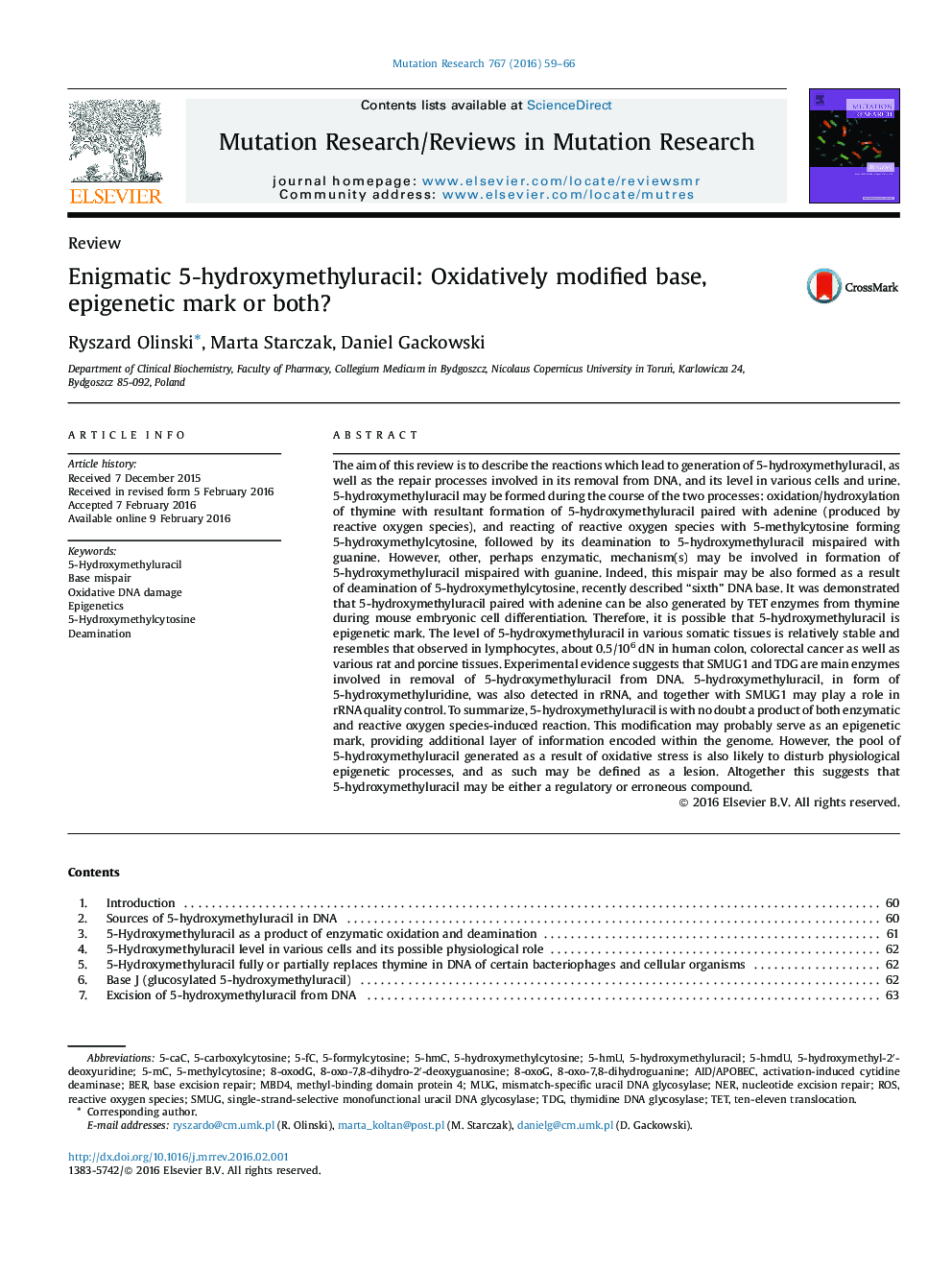| Article ID | Journal | Published Year | Pages | File Type |
|---|---|---|---|---|
| 2149623 | Mutation Research/Reviews in Mutation Research | 2016 | 8 Pages |
The aim of this review is to describe the reactions which lead to generation of 5-hydroxymethyluracil, as well as the repair processes involved in its removal from DNA, and its level in various cells and urine. 5-hydroxymethyluracil may be formed during the course of the two processes: oxidation/hydroxylation of thymine with resultant formation of 5-hydroxymethyluracil paired with adenine (produced by reactive oxygen species), and reacting of reactive oxygen species with 5-methylcytosine forming 5-hydroxymethylcytosine, followed by its deamination to 5-hydroxymethyluracil mispaired with guanine. However, other, perhaps enzymatic, mechanism(s) may be involved in formation of 5-hydroxymethyluracil mispaired with guanine. Indeed, this mispair may be also formed as a result of deamination of 5-hydroxymethylcytosine, recently described “sixth” DNA base. It was demonstrated that 5-hydroxymethyluracil paired with adenine can be also generated by TET enzymes from thymine during mouse embryonic cell differentiation. Therefore, it is possible that 5-hydroxymethyluracil is epigenetic mark. The level of 5-hydroxymethyluracil in various somatic tissues is relatively stable and resembles that observed in lymphocytes, about 0.5/106 dN in human colon, colorectal cancer as well as various rat and porcine tissues. Experimental evidence suggests that SMUG1 and TDG are main enzymes involved in removal of 5-hydroxymethyluracil from DNA. 5-hydroxymethyluracil, in form of 5-hydroxymethyluridine, was also detected in rRNA, and together with SMUG1 may play a role in rRNA quality control. To summarize, 5-hydroxymethyluracil is with no doubt a product of both enzymatic and reactive oxygen species-induced reaction. This modification may probably serve as an epigenetic mark, providing additional layer of information encoded within the genome. However, the pool of 5-hydroxymethyluracil generated as a result of oxidative stress is also likely to disturb physiological epigenetic processes, and as such may be defined as a lesion. Altogether this suggests that 5-hydroxymethyluracil may be either a regulatory or erroneous compound.
Graphical abstractFigure optionsDownload full-size imageDownload as PowerPoint slide
